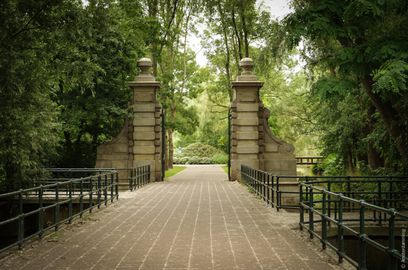

The main entrance to the park is on the Javaplatsoenzijde, which was constructed from a portion of the Muiderpoort Gate dating back to 1770. It had once served as the barrier to the bridge over the Singelgracht canal across from the Tropenmuseum. In 1811 Napoleon rode into Amsterdam through this same gate, which now serves the function of the Flevopark entrance.
Plans to build a park in the meadows between the Jewish cemetery and the Nieuwediep were given concrete form in 1908 by the biologist and professor Jac. Thijsse. The initial plans included sports fields and a park and in 1919, the plans were finalized. Unemployment was high at the time and the elevation and layout of the park demanded much hard labor. The unemployed from across the city were deployed to work on this project. In 1928 the landscaping of paths and lawns was begun while the southern part of the park was destined for the construction of the stadium Blue-White, which seated 10,000 people but was knocked down in 1938 when the park expanded.
The park was officially opened by Alderman De Miranda in 1931. Ageing Jac Thijsse spoke at the ceremony and the neighborhood association Ceram took cared for a festive opening. Originally the park was named the Zuiderzee Park. However, the construction of the Afsluiterdijk dam in 1932 and the subsequent change of the Zuiderzee sea into the fresh water IJsselmeer rendered the name obsolete. The park received its current name in 1943. In the same year a British fighter plane crashed in the park and by the end of the war, as a result of the Hunger Winter in 1944, there were hardly any trees left in the park.
An outdoor public swimming pool, the only outdoor pool with heated water facilities in the city, is located inside the park and is open to the public in the summer months. Its admittance has been on the decline and in 2016 there are plans to turn it into an indoor pool open year-round.